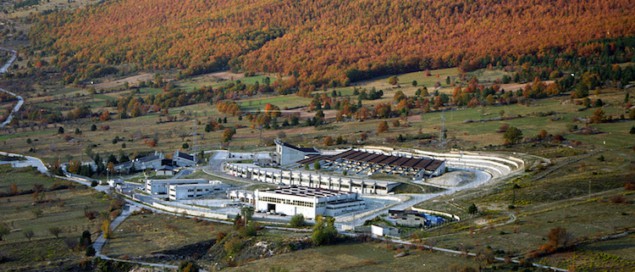
Our everyday experience shows that the macroscopic world is different from the quantum one. Unlike quantum particles, the objects in our daily existence do not, for example, exist in a superposition of different states. Traditionally, physicists explain the transition between the two worlds by saying that the quantum superposition principle, which is the building block of quantum theory, breaks down when measurements are performed. The wavefunction of this system is then said to “collapse” with the measurement.
Why such a collapse should happen is still unclear, but one model – developed by the mathematical physicist Roger Penrose, and drawing on earlier work by Lajos Diósi – suggests that gravity might play a role. Researchers in Italy, Germany and Hungary have now set important constraints on this so-called Diósi-Penrose model, in a work that could shed fresh light on a long-standing puzzle in quantum theory: why don’t the inherent properties of microscopic systems carry over to macroscopic ones?
Gravity-related wavefunction collapse
In 1996, Penrose suggested that the collapse of quantum superpositions might be caused by the curvature of space-time – that is, by gravity. The effects of gravitation, he reasoned, are negligible at the level of atoms, but increase dramatically at the level of macroscopic objects. Penrose also provided a formula to compute the decay of the superposition, using methods that were similar to Diósi’s earlier work.
In this Diósi-Penrose (DP) model, the gravity-related wavefunction collapse, which depends on the effective size of the mass density of particles in the superposition, induces a random motion of the particles. When the particles are charged (like protons and electrons), this “jitter” produces a characteristic and very faint emission of electromagnetic radiation.
A team of researchers led by Angelo Bassi of the University of Trieste has now computed the rate at which this radiation is emitted by solving the main equation of the DP model. They did this by calculating the number of photons emitted per unit time and unit frequency integrated over all spatial directions in the wavelength range λ∈ of 10−5 to 10−1 nm, which corresponds to energies E∈ of 10–105 keV. In a further development, a team of experimentalists led by Catalina Curceanu and Matthias Laubenstein from the INFN and Kristian Piscicchia from the Enrico Fermi Research Center, both in Italy, went on to measure this calculated radiation rate in an experiment at the INFN-LNGS Gran Sasso underground laboratory in Assergi.
Dedicated underground experiment
According to study lead author Sandro Donadi of the Frankfurt Institute for Advanced Studies, the experiment was designed to be sensitive to the faint X- and gamma-ray radiation that the DP model predicts. To this end, the researchers used a high-purity germanium detector to measure the radiation spectrum at the point at which theory predicts it should be enhanced. They also constructed their whole setup using materials with very low radioactivity and enveloped it in a complex system of shielding. Finally, they carried out their experiments in an underground facility specially built to have low background radioactivity. “All this effort was intended to minimize background noise sources that can mimic the collapse-related radiation that we are looking for,” Donadi says.
In addition to these measures, the researchers carefully characterized the background spectrum produced by known natural contamination sources that cannot be eliminated. By combining these experimental precautions with refined theoretical and statistical analyses of their data, they were able to set a lower bound on the effective size of the nuclei’s mass density. This lower bound is equivalent to about 1 Å, or approximately three orders of magnitude larger than previously reported bounds.
Not ruled out yet
“Our result suggests that more work needs to be done to relate gravity to wavefunction collapse, since it excludes the most natural (‘parameter-free’) version of the DP model,” Donadi tells Physics World. “However, it would be premature to dismiss gravity’s role at this stage.”
Donadi adds that Diósi and Penrose put forward good reasons for believing that there is a tension between the quantum superposition principle and general relativity. “We now intend to investigate possible solutions to this by developing refined wavefunction collapse models based on our recent findings,” he says.

A map of quantum physics, sound of a wave-function collapse, famous physicists as dogs
In the short term, the researchers plan to apply a similar type of analysis to other collapse theories, such as the GRW model put forward by Giancarlo Ghirardi, Alberto Rimini and Tullio Weber, and another model known as Continuous Spontaneous Localization (CSL). These other models are more difficult to falsify, Donadi explains, because of the different mathematical relationships between the models’ parameters and the expected radiation emission rate.
“These studies will ultimately push us in the direction of realizing new, more sensitive experimental setups based on new vanguard radiation detectors, data acquisition systems and analyses methods,” Curceanu adds.
The work is detailed in Nature Physics.
